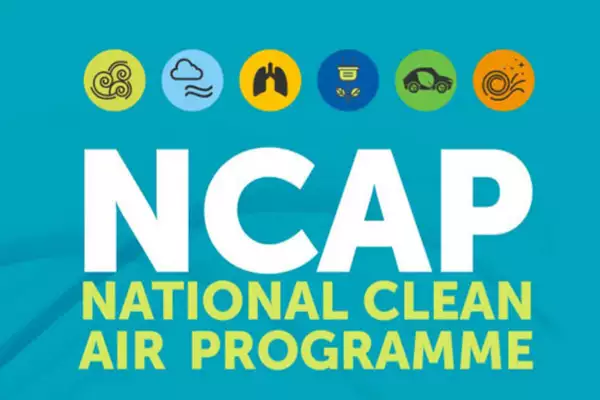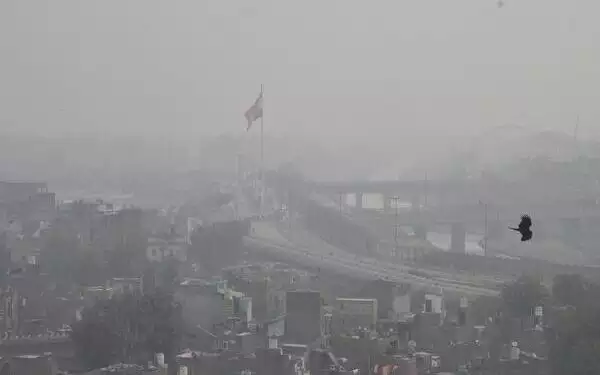The National Clean Air Programme (NCAP)recently completed its fifth year, prompting evaluation of its financial utilization and its impact on air quality across the 131 funded cities.
About National Clean Air Programme (NCAP):
- It was launched by Ministry of Environment, Forest and Climate Change (MoEFCC) in 2019 to improve air quality in 131 non-attainment cities and Million Plus Cities in 24 States.
- NCAP envisages a reduction of 20-30% in PM concentration over baseline in 2017 by 2024.
- The target was revised to achieve reduction in PM10 level by up to 40% or achievement of national standards (60 µg/m3) by 2025-26.
- City Action Plans (CAPs) prepared by all 131 cities and are being implemented by Urban Local Bodies.
- The city-specific clean air action plans target air-polluting sources like Soil and road, Dust, Vehicles, Domestic Fuel, MSW Burning, Construction Material and Industries.
- PRANA (Portal for Regulation of Air-pollution in Non-Attainment cities), monitors the NCAP and disseminates information on air quality management efforts to the public.
- Funding for CAPS implementation is mobilised through Central Government schemes, Municipal Corporation, Urban and Industrial development authorities.
- These schemes include:
- Swachh Bharat Mission SBM (Urban)Atal Mission for Rejuvenation and Urban Transformation (AMRUT)Smart City MissionSustainable Alternative towards Affordable Transportation (SATAT)Faster Adoption and Manufacturing of Hybrid and Electric Vehicles (FAME-II)
- Nagar Van Yojna, etc.
- Public Grievance Redressal Portal (PGRP)/helpline were developed by all 131 cities to address public complaints of air pollution in timely manner.
- Emergency Response System (ERS/ GRAP) were developed for taking action in air emergencies.
- 90 cities out of 131 cities have shown improvement in air quality in terms of annual PM10 concentrations in FY 2022-23 for the baseline of FY 2017-18.
Impact on Air quality across NCAP-funded cities:
- This analysis draws from the “Five Years of the National Clean Air Programme” report published by Respirer Living Sciences and Climate Trends.
- Out of the allocated Rs 9,631.23 crore, only 60.47% has been effectively utilized.
- This raises concerns about the efficient allocation and utilization of funds, questioning the overall impact of the financial investment in combating air pollution.
City-wise Funding and Utilization:
- Greater Mumbai: Despite receiving the highest allocation, only 72.48% of the funds have been utilized, while PM 2.5 concentration increased by 38.1% since 2019.
- Kolkata: 92.57% of the funds were utilized but the achieved reduction in PM2.5 levels (16.9%) and PM10 levels (13.5%) indicates a mixed impact.
- Bengaluru: Though only 1.01% of the funds were utilized, positive results with a 2% drop in PM2.5 levels and over 11% reduction in PM10 levels were observed.
- Jaipur: Despite utilizing 80% of the allocation, a 13% rise in both PM2.5 and PM10 levels occurred.
Performance in Most Polluted Cities:
- Delhi: India’s most polluted city, utilized 28.2% fund allocation of Rs 38.2 crore and a 5.9% reduction in PM2.5 levels was achieved from 2019 to 2023.
- Patna: Ranking second in pollution severity, Patna utilized 52.8% of the allocated fund, achieving a notable 25.2% reduction in PM2.5 levels.
- Meerut: With an allocation of Rs 139.2 crore, Meerut utilized 62.4% of the funds, resulting in an impressive 42% reduction in PM2.5 levels.
Ref: Source
| UPSC IAS Preparation Resources | |
| Current Affairs Analysis | Topperspedia |
| GS Shots | Simply Explained |
| Daily Flash Cards | Daily Quiz |





